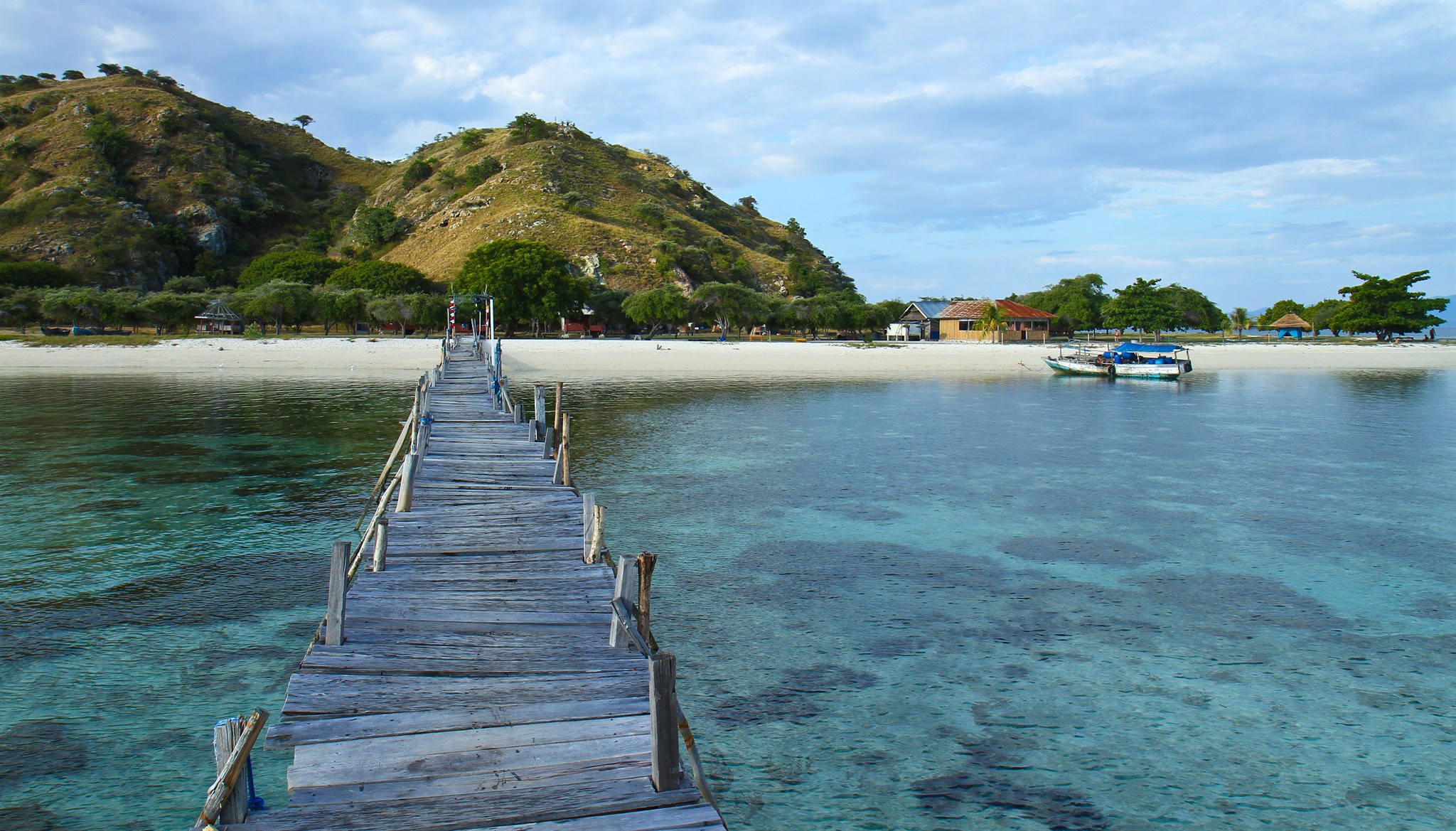Komodo National Park is located in the center of the archipelago of Indonesia, between the islands of Sumbawa and Flores. Founded in 1980, initially with the main objective was to preserve the park unique Komodo dragon (Varanus komodoensis) and its habitat. However, in recent years, the park's objectives have expanded to protecting all biodiversity, both terrestrial and marine. In 1986 the park was declared a World Heritage Site and Book of Man and the Biosphere by UNESCO, both indications of the biological significance of the park.
 Komodo National Park includes three major islands: Komodo, Rinca and Padar, as well as several smaller islands creating a total surface area (marine and terrestrial) and 1817 km (proposed extensions would bring the total area of over 2321 km2). As well as being home to the Komodo Dragon, Park provides refuge to many other important species such as orange-footed terrestrial birds bush, an endemic rat, and the Timor deer. In addition, the park is one of the richest marine environments including coral reefs, mangroves, seagrass beds, seamounts, and semi-enclosed bays. These habitats harbor more than 1,000 species of fish, about 260 species of reef building, and 70 species of fungi. Dugongs, sharks, manta rays, at least 14 species of whales, dolphins and sea turtles, the Komodo National Park their home.
Komodo National Park includes three major islands: Komodo, Rinca and Padar, as well as several smaller islands creating a total surface area (marine and terrestrial) and 1817 km (proposed extensions would bring the total area of over 2321 km2). As well as being home to the Komodo Dragon, Park provides refuge to many other important species such as orange-footed terrestrial birds bush, an endemic rat, and the Timor deer. In addition, the park is one of the richest marine environments including coral reefs, mangroves, seagrass beds, seamounts, and semi-enclosed bays. These habitats harbor more than 1,000 species of fish, about 260 species of reef building, and 70 species of fungi. Dugongs, sharks, manta rays, at least 14 species of whales, dolphins and sea turtles, the Komodo National Park their home.Threats to terrestrial biodiversity include the increasing pressure on water resources and forestry, covering as the local population has increased by 800% over the past 60 years. In addition, Timor deer population, the source of the preferred prey for Komodo dragon in danger of extinction, is being plundered. Destructive fishing practices like dynamite fishing, cyanide, and the compressor of a serious threat to marine resources of the Park through the destruction of habitats (coral reefs) and the resource itself (populations of fish and invertebrates). The current situation in the park is characterized by a steady decline, but destructive fishing practices primarily by immigrant fishermen, and pressure on demersal stocks like lobsters, shellfish, groupers and wrasses. The entries in the contamination of wastewater chemicals are increasing and could pose a significant threat in the future.
Today Taman Nasional Balai Komodo PKA and PT. Putri Naga Komodo work together to protect the vast resources of the park. Our goal is to protect the park's biodiversity (both marine and terrestrial) and breeding stocks of commercial fish for replenishment of surrounding fishing grounds. The biggest challenge is to reduce threats to resources and conflicts between incompatible activities. Both parties have a long-term commitment to protect the marine biodiversity of Komodo National Park.



No comments:
Post a Comment
my blog is dofollow. please comment, but do not spam. thanks